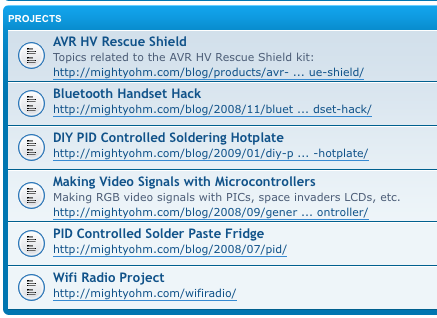
I previously posted about Forrest M. Mims III’s Getting Started in Electronics, one of the best books out there for someone who wants a thorough, yet unintimidating introduction to electronic components and circuits.
From the mid-1980’s through the late 1990’s, Forrest Mims also published several mini-notebooks, each dedicated to a specific topic in electronics. Each mini-notebook contains 50 pages of circuits, electronic concepts, and project ideas.
The complete set includes:
- 555 Timer Circuits
- Basic Semiconductor Circuits
- Communications Projects
- Digital Logic Circuits
- Environmental Projects
- Formulas, Tables, and Basic Circuits
- Magnet and Sensor Projects
- Op-amp IC Circuits
- Optoelectronic Circuits
- Schematic Symbols, Device Packages, Design and Testing
- Science Projects
- Sensor Projects
- Solar Cell Projects
I had a few of the originals when I was growing up and wish I had kept more of them. I specially remember reading the Optoelectronics Circuits Mini-Notebook in High School. I attempted to build the optical communicator entirely with parts from Radio Shack, which was very difficult 15 years ago, and would be pretty much impossible today!
Updated/compiled versions of the notebooks are available on Forrest Mims’ website, but many of the originals can be found used for less than a few bucks each on amazon.com .
.




